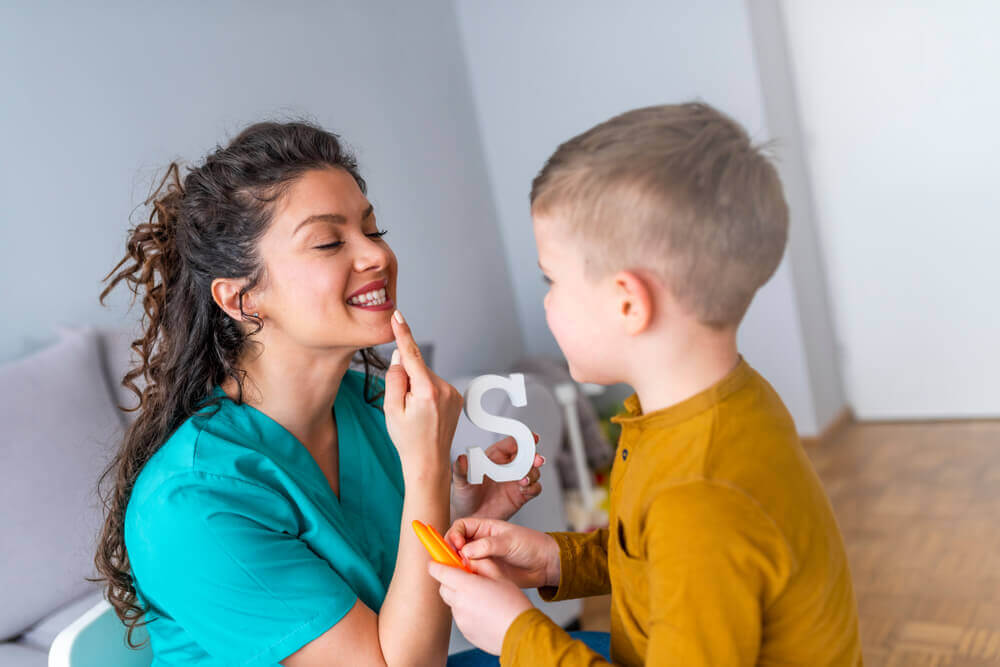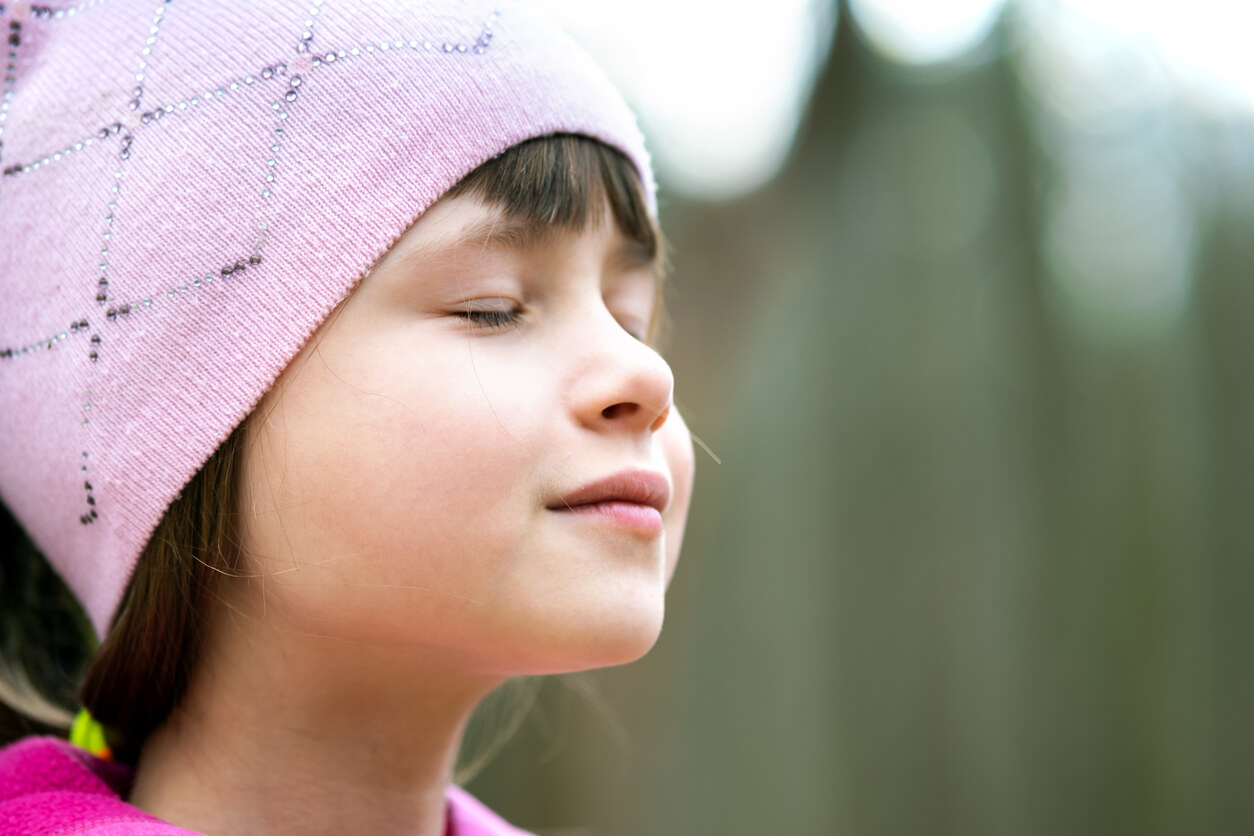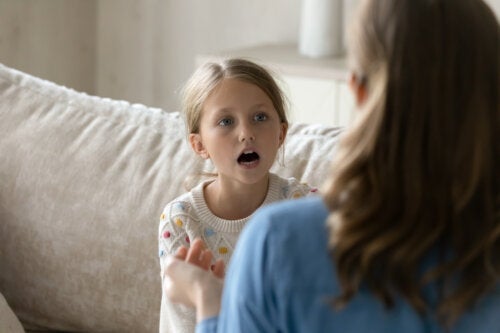5 Exercises to Correct Lisps in Children

Many children experience speech disorders that require specific intervention. With that in mind, today we want to recommend some exercises to correct lisps in children. Keep reading to learn everything you need to know.
The best exercises to correct lisps in children according to specialists
Lisps, according to WebMD, a lisp is “a speech impediment that specifically relates to making the sounds associated with the letters S and Z.” In children with functional dyslalia, pronunciation problems, or other language disorders, specialists advise a series of exercises that can help in these specific cases. Below, we’ll present them to you.
1. Breathing exercises
Controlling breathing is a fundamental part of language development. So much so that the first exercise before starting is to perform the following steps:
- Breathe in through the nose.
- Then, exhale through the mouth slowly and continuously.

2. Blowing exercise
A study from the National University of Nicaragua carried out in 2014 used this technique in its action plan to alleviate a lisp in a preschool girl. The results, as described by the authors themselves, were excellent, and the little girl felt very motivated when achieving the exercise. The activity consists of performing soft and continuous blowing. For this, different tools can be used, such as straws, candles, or paper balls.
3. Exercises with the lips and tongue
This activity will allow the child to practice the pronunciation of the th sound. To do this, the child will use their lips and tongue. In addition to helping them to correct the lisp, they’ll also have a great time if they practice it with a loved one. Take note!
- The child will have to bring the corner of his lips closer and further away.
- Then, they’ll bring forward and retract the separated lips.
- The third step is to widen and narrow the tip of the tongue.
- Then, they should stick out their tongue and leave it flat between their teeth for a while.
- When they’re in this position, they’ll breathe in through the nose and gently let the air out through their mouth while making the th sound.
4. Auditory discrimination exercises
Another of the most useful techniques is to make a list of words at home or at school so that the child can differentiate which of them have the th sound and which do not.

5. Exercises focused on the th sound
Finally, we advise you to repeat the S and Z sounds between vowels so that the little one learns the difference through musicality. There are also stories and onomatopoeias very useful to practice!
Help to correct lisps in children with these exercises
All these exercises are endorsed by specialists and have the support of experts in the field to correct lisps in children. Provided, of course, that this is due to pronunciation problems and not dialectal reasons.
We hope you’ll put them into practice at home. Without a doubt, there’s no better way to practice them than with the collaboration of your family or people you trust. In this way, they’ll be more enjoyable and little ones will enjoy them a lot when the time comes to perform them.
All cited sources were thoroughly reviewed by our team to ensure their quality, reliability, currency, and validity. The bibliography of this article was considered reliable and of academic or scientific accuracy.
- Alemán Urbina, Wendy Martín y Flores Sánchez, Emma Fabiola. (2014) Estrategias para desarrollar la expresión oral de la niña Nahomy Salmerón, del II nivel de Educación Preescolar, en el Centro Escolar Público Santa Rosa, Distrito IV, de la Ciudad de Managua, durante el I Semestre del año lectivo 2014. Otra thesis, Universidad Nacional Autónoma de Nicaragua, UNAN-MANAGUA.
- Alonso, A. (1952). Historia del ceceo y del seseo españoles. Instituto Caro y Cuervo.
- Coelho, F. (2017, April 24). ¿Qué es el seseo? (explicación y ejemplos). Diccionario de Dudas. https://www.diccionariodedudas.com/seseo/
- Diccionario panhispánico de dudas. Seseo. Rae. https://www.rae.es/dpd/seseo
- Jaramillo, R., & Edith, D. (2017). Aplicación de ejercicios de musicoterapia para mejorar el nivel morfo-sintáctico del lenguaje en niños con dislalia funcional de 5 a 6 años, estudio realizado en la Escuela de Educación Básica Fiscal República de Cuba. Universidad de Guayaquil. Facultad de Ciencias Médicas. Carrera de Tecnología Médica.
